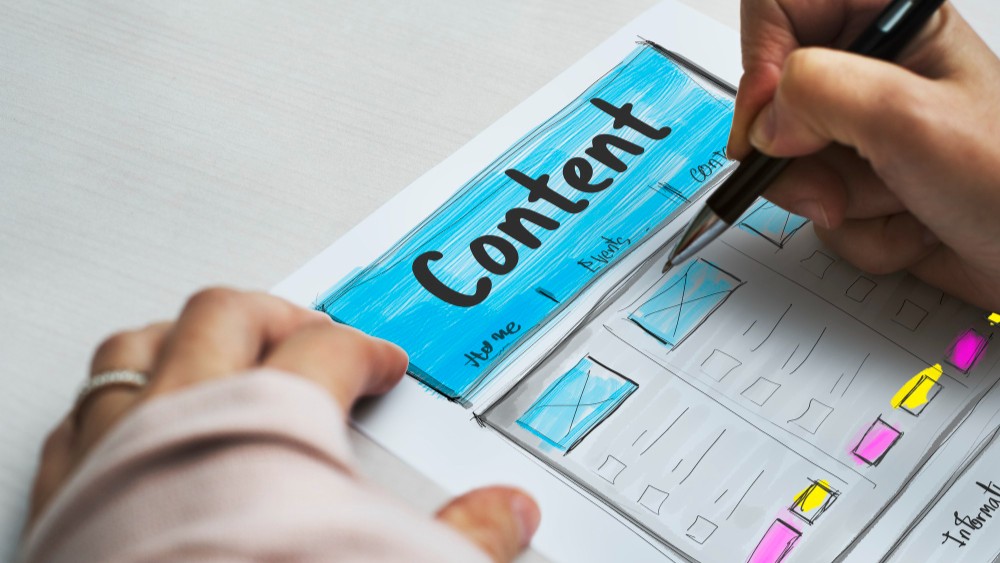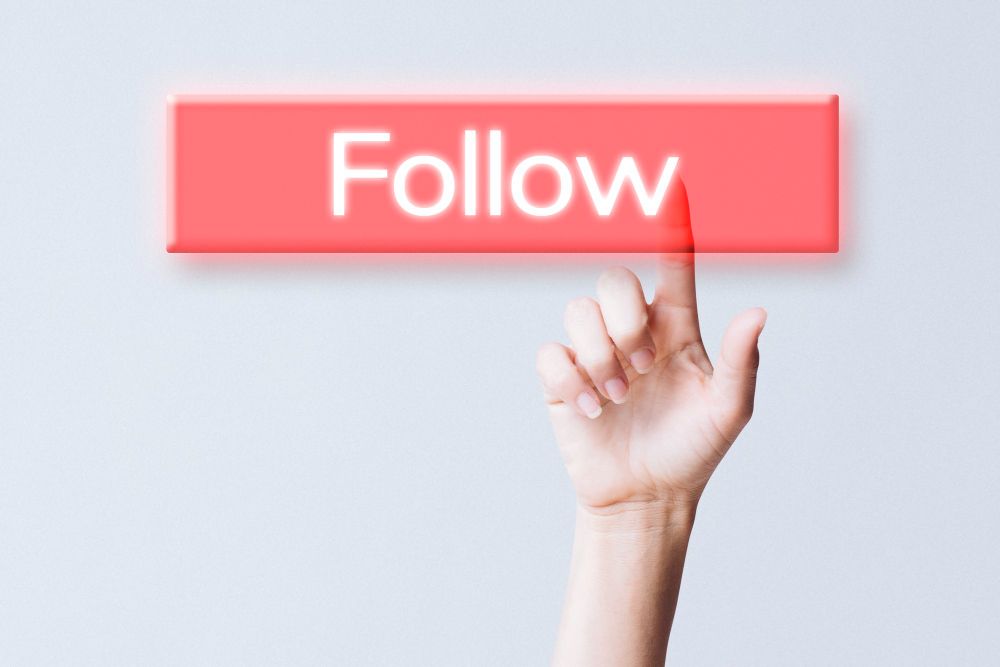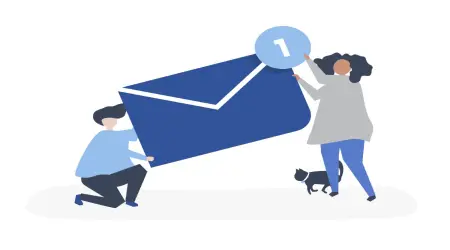

Email Marketing for Content Distribution: How to Maximize Reach and Engagement
Introduction
Email marketing is like sending messages to lots of people at once. It's one of the best ways to share your cool content and keep your audience interested. For people who create and share content, it's super important to get as many people as possible to see it and to make sure they really enjoy it.
With the right tricks, email marketing can make your content way more popular and help you get awesome results. Whether you're sending out fun newsletters, special deals, or important updates, emails are a great way to talk to your audience and get them excited.
In this article, we’ll show you how to use email marketing to reach more people and get them more interested in what you're sharing. Let's make your content go viral!
Why Email Marketing is So Powerful for Sharing Your Content
Email marketing is one of the best ways to share your content and get amazing results. Here’s why it’s so great:
- Direct Reach: Emails go straight to people's inboxes, so the right people get your message at just the right time.
- High ROI (Return on Investment): This means you get a lot of benefits for what you spend. Email marketing works better than most other ways of sharing content!
- Complete Control: You get to decide what to say, how often you say it, and how you say it. This helps you make your emails feel personal and special for the people you send them to.
With email marketing, you can break through all the distractions and talk directly to your audience, making sure they really connect with your message.
Email Marketing vs. Other Ways to Share Your Content

When we compare email marketing with things like social media or blogs, email has some clear benefits:
Email Marketing:
- It’s more personal and gets to the right people.
- People are more likely to open and read your emails because they’re made just for them.
- You can build long-term relationships, so people keep coming back to you.
Social Media & Blogs:
- It can reach a lot of people, but not always the ones you want to target.
- The content doesn’t stay around as long, and it’s less personal.
- It’s harder to track how successful it is without special tools.
With email, you can go beyond just getting people's attention. You can connect with them in a way that makes them want to keep reading your content, building a relationship that lasts.
How to Make Sure More People See Your Emails
Building a Great Email List
The first thing you need for a successful email campaign is a good email list. Without the right people on your list, even the coolest emails won’t get much attention. Here’s how to create and keep a great list of emails:
- Opt-ins: Make it easy for people to sign up on your website or blog if they want to get emails from you.
- Lead Magnets: Offer something awesome, like free eBooks, exclusive content, or in exchange for their email addresses.
- Segmentation: Organize your email list by what people like or what they’ve done before (like what they’ve bought or read) so you can send them stuff they actually care about.
Building a good email list takes time, but if you keep working at it, it will help you connect with the right people and make your emails more successful!
Personalization and Segmentation
Segmentation involves dividing your email list into specific groups, ensuring you deliver the most relevant message to each audience. This way, you can make your emails feel extra special for each person!
Here are some ideas for segmentation:
- Group people by what they like (like readers, buyers, or blog fans).
- Segment them by what they’ve done before, like what they’ve bought or what they’ve read.
- Use where they live or their age to make your emails even more personal.
Personalized emails, where you mention their name or things they like, make people more likely to open your emails and read them.
Making Your Subject Line Stand Out
Your subject line is the first thing people see when they get your email, so it needs to grab their attention! A great subject line makes them want to open your email right away.
Here are some tips to make your subject lines amazing:
- Keep it short and simple (around 40-50 characters).
- Use numbers or lists, like “5 Tips to Improve Your Email Game.”
- Create a sense of urgency, but don’t be too pushy, like “Last Chance for 20% Off.”
- Personalize it with the person’s name, like “Hey [Name], You Won’t Want to Miss This!”
Remember, your subject line should match what’s inside the email. If it doesn’t, people might open it but won’t be interested in what you’re saying, and they might even unsubscribe!
Making Your Emails Super Fun and Engaging

Writing Emails People Want to Read
To keep people interested in your emails and make them want to take action, you need to write content that really speaks to them. Here’s how you can write emails that grab attention and get people excited:
- Know Your Audience: Write your emails so they match what your readers care about. Think about what they like, need, or what problems they’re trying to solve. Use words that feel like you’re talking directly to them.
- Tell a Story: Everyone loves a good story! Share fun or inspiring stories that make people feel something, whether it's about a happy customer, a cool success story, or a fun experience.
- Be Short and Sweet: People are busy, so make your emails quick to read. Don’t make them long or complicated. Get to the point fast!
- Clear Call-to-Action (CTA): Tell your readers exactly what they should do next. Whether it’s clicking a link, downloading something, or buying something, make sure it’s clear and easy to find.
When your emails are interesting and helpful, your audience will look forward to getting them, and they’ll want to do what you ask!
Using Pictures and Videos to Make Your Emails Pop
Adding pictures, videos, or cool graphics can make your emails more fun and help people interact with them more. But be careful, not too many pictures or videos! They should make your email better, not take over.
Here are some tips:
- Use Good Pictures: Pick clear, high-quality images that go along with your message (like cool product pictures, fun illustrations, or easy-to-read charts).
- Add Infographics: If you want to explain something quickly, use an infographic. They help people understand information easily.
- Use Videos: Videos are awesome for grabbing attention, but keep them short and relevant. No one wants to watch a super long video in an email!
- Don’t Overload with Images: Too many pictures can make your email messy. Stick to just a few and keep the focus on your message.
The right pictures and videos can help people click on your email and interact with it more.
Testing and Checking What Works
A/B testing is a great way to see what works best in your emails. It means you test two different versions of an email to see which one gets the best response from your audience. Here’s what you can test:
- Subject Lines: Try different ways of writing your subject lines to see which one gets the most people to open your email.
- Email Content: Try different styles or lengths for your emails, like a fun, casual tone or a more serious one, to see what people like.
- Call-to-Action (CTA): Experiment with different button texts or where you place your CTA to see which one gets more clicks.
After testing, look at your email results, like how many people opened the email or clicked on your links. This helps you learn what works best and make your future emails even better!
When and How Often Should You Send Your Emails?
Best Times to Send Your Emails So People See Them
The timing of your emails is super important; send them at the right time, and more people will open them! While the best time can depend on your audience, here are some general tips:
Weekdays vs. Weekends:
- Weekdays (especially Tuesday through Thursday) are usually the best. People are working and checking their emails more often.
- Weekends can be tricky. People might not be checking their emails as much because they’re busy with personal stuff.
Morning vs. Afternoon:
- Morning (8 AM - 10 AM) is often the best time because people check their emails first thing in the morning.
- Afternoon (1 PM - 3 PM) is also a good time, right after lunch when people return to their desks.
To find the best time for your emails, it’s a good idea to test different times and see which one works best. Tools that track open rates can help you figure this out.
How Often Should You Send Emails?
Finding the right balance in email frequency is key to maintaining engagement without overwhelming your audience. You want to stay on people’s minds but not send too many emails. Here’s how to figure it out:
- Weekly Newsletters: If you want to stay in touch often, sending a weekly newsletter works well. It keeps people updated without being too much.
- Monthly Updates: If you don’t have new content every week, sending an email once a month is a good choice.
- Promotional Emails: Only send these when you have a special deal or offer. Too many promotional emails can annoy people, and they might unsubscribe.
Here’s a good guide to follow:
- If your readers really enjoy your content, you can send more emails (like 2-3 times a week).
- If your emails aren’t as exciting, try sending them once or twice a month.
The most important thing is to keep track of how your audience responds and change your schedule based on that.
Using Automation to Make Your Emails Work for You
Automating Your Emails
Email automation is like setting up a robot to send your emails for you. It saves time and makes sure your emails get sent at the right time. Here’s how it helps:
- Drip Campaigns: These are automatic emails sent over time. They’re great for teaching people more about your content and slowly guiding them to take action (like buying something or signing up).
- Welcome Emails: As soon as someone signs up for your emails, you can send them a special welcome message. It’s a great way to introduce them to your brand or content.
- Follow-ups: If someone interacts with your email (like downloading a free guide), you can send them a follow-up email with more helpful info or a special deal.
Email tools like Mailchimp or HubSpot make it easy to set up these automated emails and track how well they’re working.
Linking Your Email Marketing with Other Tools
Connecting your email marketing with other tools can help you reach even more people in the best way possible. Here’s how integrating with other platforms can make your emails even better:
- CRM Systems: By connecting to a CRM (which tracks what people like and do), you can send more personalized emails that match each person’s interests.
- Social Media: If you link your emails with your social media accounts, you can make sure your message is everywhere, whether people are checking their email or scrolling on social media.
- Content Management Systems (CMS): If you connect your email tool with a CMS (like WordPress), you can automatically update your emails with the latest content from your website.
When everything is connected, your audience gets a smooth, consistent experience, whether they’re reading your emails or visiting your website.
How to Measure Success and Improve Your Email Strategy

Key Numbers to Track How Well Your Emails Are Doing
To see if your email campaigns are working, you need to track a few important numbers. These numbers will tell you how good your emails are and where you can make them even better:
- Open Rates: This shows how many people opened your email. If not many people open it, you might need to make your subject lines more exciting or send emails at a better time.
- Click-Through Rates (CTR): This shows how many people clicked on links in your email. It helps you understand if your email is interesting and if people want to take action (like clicking to learn more).
- Conversion Rates: This tracks how many people did what you wanted them to do after clicking a link in your email. For example, did they buy something or sign up for a webinar?
- Bounce Rates: This shows how many emails couldn’t be delivered. If a lot of your emails bounce, it might mean there are problems with your email list, like outdated email addresses.
By keeping an eye on these numbers, you can figure out what’s working and what needs to be fixed to make your emails better.
How to Use Your Data to Make Your Emails Even Better
Looking at the numbers from your email campaigns can help you improve them. Here’s how to use this data to make your strategy better:
- Spot Trends: Look at patterns in your email results. For example, if certain subject lines make more people open your emails, try using similar ones in the future.
- Test Different Ideas: A/B testing means trying out different things to see what works best. You can test different subject lines, pictures, or buttons to see which ones get the most clicks.
- Personalize and Segment: Use your data to make your emails more personal. For example, if you see that certain groups of people like different things, you can send emails that match their interests better.
By using these tips and looking at your email data, you can keep improving your emails to get even better results!
Conclusion
Email marketing is a powerful tool to share your content and connect with people. By following the tips above, from making a great email list to sending the right content at the right time, you can make your emails more successful.
Just remember: email marketing is all about improving over time. Keep testing new ideas, checking your results, and making changes to your strategy. The more personal and creative your emails are, the better they will work!
Start using these strategies now, and you’ll make your emails even better at reaching and engaging your audience!
Frequently Asked Questions
What’s the easiest way to use email to share new content?
Grow your own list, group people by what they care about, and send a simple “new content” email with one clear button or link. Break big pieces into small takeaways in the email, then link to the full thing. Set up a quick follow-up sequence (publish day, next day, end-of-week) to reach people who didn’t open the first one.
When should I send to get the most opens and clicks?
There isn’t a single “best” time for everyone. Weekday late mornings often work well, but your audience may be different. Start with that window, test a few send times, and stick with what your data shows.
How often should I email my list?
Weekly or every other week is a good starting point. Only increase if you can keep quality high. Watch unsubscribes and spam complaints; if they rise, you’re emailing too often or not delivering value.
Should I include the whole article in the email or just a teaser?
If you want site traffic and easy tracking, use a short summary with a “Read more” link. If you want people to get the full value right in their inbox, send more of the content. Many teams do a mix: a tight digest in the email and the deep dive on the site, then test both.
How do I track what email is doing for my content?
Tag your links (e.g., with UTMs) the same way every time so analytics can connect the dots. Then check clicks, visits, time on page, and conversions from those tagged links. Keep the naming simple so reports stay clean.
How do I stay out of spam and follow the rules?
Set up SPF, DKIM, and DMARC. Remove people who never engage. Use honest subject lines, avoid spammy wording, include your address, and make unsubscribe one click. If you email in the EU/UK, make sure you have consent and follow GDPR/PECR.
Related Articles :-
- HVAC Email Marketing: Getting More Leads and Keeping Customers Happy
- Real Estate Email Templates: How to Craft the Perfect Email for Agents and Clients
- Email Marketing for Insurance: How to Build Trust and Help Clients Make Smart Choices
- How to Check Competitors' Email Marketing: Tools and Techniques for Competitive Analysis




